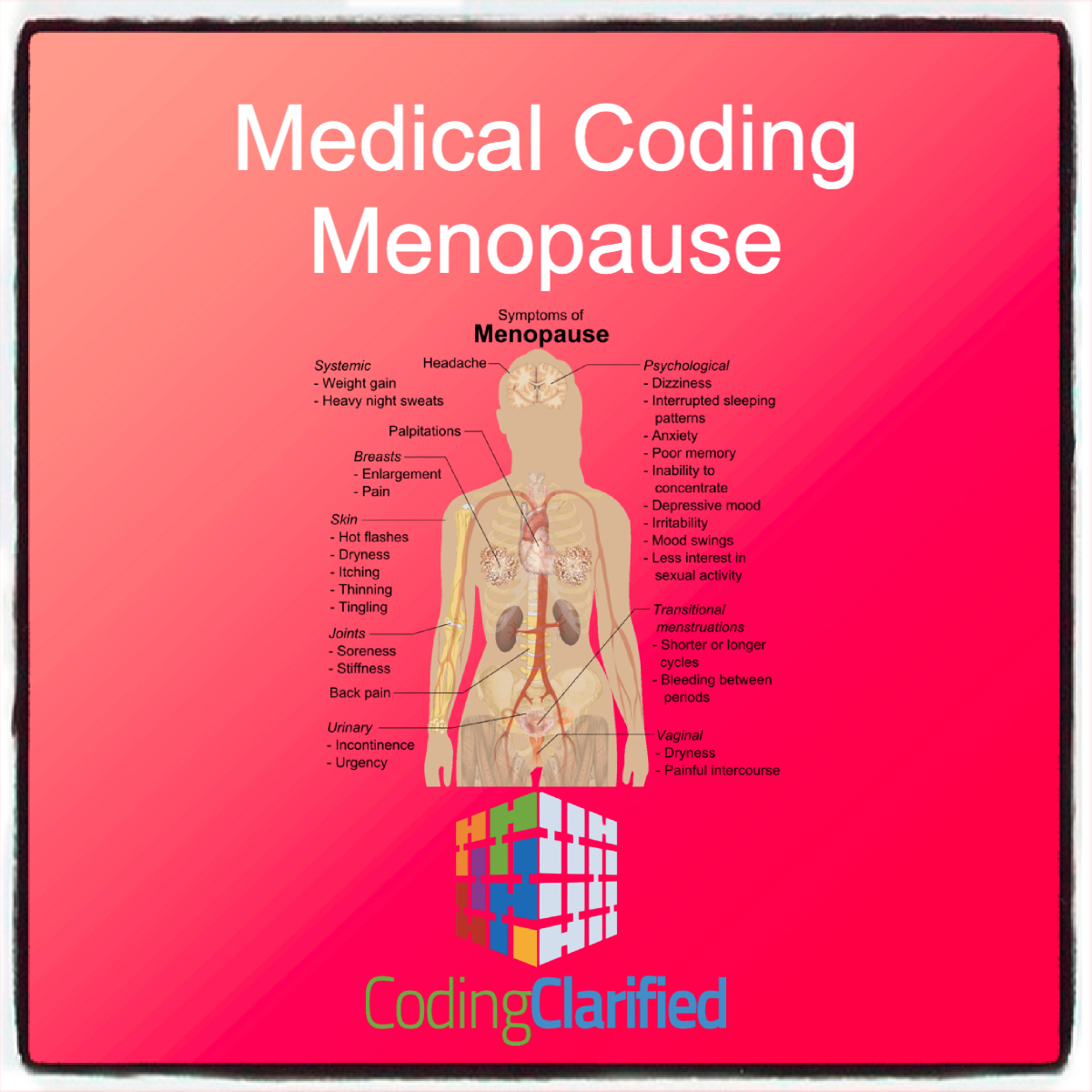Medical Coding & Billing for Menopause: Guidelines and Tips
Menopause is a natural biological transition in a woman’s life, typically occurring between the ages of 45 and 55, marked by the end of menstruation and reproductive capability. Although it’s not considered a disease, menopause can involve a range of physical and emotional symptoms that often prompt medical evaluation and treatment. Accurate billing and medical coding for menopause-related services are essential to support proper care, documentation, and reimbursement. This blog provides an overview of ICD-10-CM codes, CPT codes, and practical billing tips for menopause care.
Understanding Menopause for Coding Purposes
Menopause care may include:
-
Evaluation and management of symptoms (e.g., hot flashes, vaginal dryness, mood changes)
-
Hormone replacement therapy (HRT)
-
Preventive screening (e.g., bone density, mammograms)
-
Counseling and education
Correct coding depends on whether the patient presents with symptoms, is undergoing routine care, or is being treated for complications related to menopause.
ICD-10-CM Diagnosis Coding for Menopause
Menopause is classified under ICD-10-CM Chapter 15: Diseases of the Genitourinary System, category N95.
Common Menopause-Related ICD-10 Codes:
| ICD-10 Code | Description |
|---|---|
| N95.1 | Menopausal and female climacteric states |
| N95.0 | Postmenopausal bleeding |
| N95.2 | Postmenopausal atrophic vaginitis |
| N95.8 | Other specified menopausal and perimenopausal disorders |
| N95.9 | Unspecified menopausal and perimenopausal disorder |
| Z78.0 | Asymptomatic menopausal state |
| Z79.890 | Long-term (current) use of hormone replacement therapy (HRT) |
Use Z78.0 if the patient is postmenopausal without symptoms or complaints.
Use N95.1–N95.9 for symptomatic menopausal visits, including hot flashes, insomnia, or mood changes.
CPT Coding for Menopausal Care
Menopause-related services are typically billed using E/M (evaluation and management) and preventive care codes. Additional services may include lab testing, bone density scans, and procedures.
Evaluation and Management (E/M) Codes:
| CPT Code | Description |
|---|---|
| 99202–99215 | Office/outpatient E/M visits (based on time or MDM) |
| 99384–99387 | Preventive visit (new patient) |
| 99394–99397 | Preventive visit (established patient) |
Common Additional Services:
| CPT Code | Description |
|---|---|
| 77080 | DXA scan (bone density test for osteoporosis screening) |
| 81002 | Urinalysis, non-automated |
| 84443 | TSH (thyroid testing if evaluating fatigue or weight gain) |
| 88141–88175 | Pap smear (if indicated) |
| J9217 | Leuprolide acetate injection (for hormone-related conditions) |
Counseling and Hormone Therapy Coding
If the visit involves counseling for hormone therapy, the E/M level may be based on time, with documentation of total time spent and content of counseling (risks, benefits, alternatives).
For HRT management:
-
Use Z79.890 for ongoing HRT
-
Document the indication (e.g., N95.1 for symptomatic menopause)
Billing Tips
-
Differentiate preventive vs. problem-based visits: Use appropriate preventive codes if the patient is asymptomatic, or E/M codes if managing symptoms.
-
Use time-based coding when applicable: Especially when a large portion of the visit involves counseling on menopause or HRT.
-
Link diagnoses correctly: Menopause symptoms must match the ICD-10 code to avoid denials.
-
Screening vs. diagnostic services: Use Z-codes for screening services (e.g., Z13.820 for osteoporosis screening) and N-codes for symptom evaluation or disease.
Documentation Essentials
Ensure your documentation includes:
-
Patient’s menopausal status (natural, surgical, perimenopausal)
-
Symptoms or concerns (e.g., hot flashes, sexual dysfunction)
-
Medical decision-making: HRT risks/benefits discussed, diagnostic testing ordered
-
Preventive services provided: Mammogram referral, Pap test, DXA scan, labs
Common Coding Mistakes to Avoid
-
Using only Z78.0 when symptoms are present – this code is for asymptomatic menopausal state.
-
Incorrectly bundling preventive and problem-focused visits – you may bill both with modifier -25 if documentation supports separate services.
-
Missing time-based coding opportunity when extensive counseling is provided.
-
Not documenting rationale for hormone therapy – critical for payer justification.
Menopause-related care involves a broad range of clinical encounters, from routine preventive visits to complex management of symptoms and hormone therapy. By using the correct diagnosis and procedure codes, linking symptoms appropriately, and maintaining clear documentation, providers can ensure accurate billing and continuity of care.
AAPC OBGYN Coding Alert https://www.aapc.com/codes/coding-newsletters/my-ob-gyn-coding-alert/coding-quiz-coding-for-postmenopausal-abnormalities-pinpoint-the-right-diagnosis-162136-article

